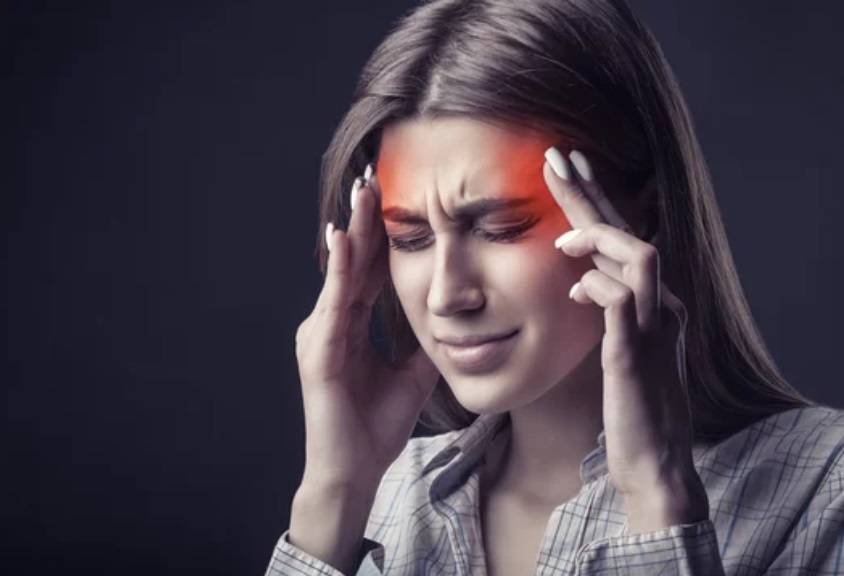INTRODUCTION
To put it in the simplest way possible, a headache is a pain in the head. Now, where does this pain occur? how severe is the pain? what are the triggering points? what are the other symptoms accompanying them? how long does it stay? and many such questions pave the way to numerous types of headaches.
Two of such most common types of headaches are —
- Sinus headache: it is caused due to blockage and infection in the sinus wells placed at specific regions on the face.
- Migraine headache: it can be caused due to various reasons like stress, bad eating habits, etc where the headache occurs on only one side or on both sides of the head.
Both of these are quite similar to each other in terms of their symptoms which is why people often get confused about the type of headache that they are facing because of which the treatment also gets delayed.
Thus, in order to figure out the difference between the two kinds of headache and go for immediate treatment, one can look for the following clues with regard to:-
CAUSES:-
Causes for sinus headache:-
- Infection: bacterial, viral of fungal infection in the nasal tract through the air, water, food, or any other source.
- Allergy: hypersensitivity to allergens (pollen grains, food, dust, animals, flowers, etc) depending on each one’s body type.
- Improper structure of the nose or the septum (cartilage that separates both halves of the nose) from birth or due to any accident or even surgery.
- Previous history of chemotherapy which might have damaged the sinus cells making it more prone to infections.
- People face a condition called cystic fibrosis as a result of a genetic mutation in their bodies. This thickens the mucus and thus causes sinus blockage.
- False practices like smoking, consuming cocaine, etc.
Causes for migraine headache:-
- Stress
- Bright lighting
- Eating at the wrong time
- Unhealthy eating habits
- Weakness
- Insomnia or irregular sleep
- Consumption of alcohol, caffeine, junk, and processed food.
- Consuming readymade food which contains aspartame and monosodium glutamate (MSG) which is used to increase their storage capacity and enhance the flavour.
- Overexertion and extreme physical exercises
- Changes in the weather and unsuitable environment
- Strong smell, fragrance, fumes, and smoke
- Hormonal changes in a woman’s body due to menstruation, menopause, or pregnancy.
- Being on medication such as oral contraceptives and nitroglycerin
SYMPTOMS:-
Symptoms of sinus headache:-
- Pain around the eyes, cheek, and forehead
- Redness and swelling of cheeks
- Stuffiness in the nose
- Green or yellow thick mucus discharge from the nose
- Lacking a sense of smell
- Pain in the upper jaw
- Giddiness
- Fever
Symptoms for migraine:-
- Severe pain only on one side of the head and in rare cases, pain occurs on both sides (front side of the face)
- Photophobic, which means, sensitivity to bright lights
- Intolerant to loud sound and noise
- Extreme pain in the morning which gets better with time and worsens on doing any physical activity
- Nausea and vomiting
- Stuffiness of nose
- Tearing of the eyes
In some people facing migraine every now and then, they prominently experience two kinds of symptoms that alarms the onset of migraine. These are:-
1) Prodrome
It is seen 24 hours before the migraine attack and the set of symptoms include —-
- Urinating more number of times than usual
- Acidity
- Frequent yawning
- Mood swings
- Food cravings
2) Aura
It is seen 60 minutes before the attack and it does not happen to all the people with migraine problems.
3) Photophobia
4) Difficulty in speaking
5) Numbness and tingling sensation in the hands and head
6) Confused mind and perplexity
MAJOR DIFFERENCE BETWEEN SINUS AND MIGRAINE HEADACHES:-
- A sinus headache happens only on the front side of the face
- It mostly gets cured after 7 days of treatment
Whereas,
- Migraine is sometimes hereditary
TREATMENT for Sinus Headache
- Inhaling steam: breathing warm moist air (mostly using a dispenser) will relax the blocked pipes connecting the sinus to the nasal passage. It also kills the brewing bacteria and other microorganisms.
- Saline rinsing or saline irrigation using neti pot: here sterile saline water or salt water is used to rinse the inner region of the nose with the help of devices like neti pot, squeeze bottles or bulb syringes.
- Tablets: consuming OTC (over the counter) or general tablets which are considered to be safe and act as pain killers, decongestants, and anti-allergens.
- Medical treatments: anti-inflammatory corticosteroids, antibiotics (in case of infection), or surgeries (in case of the improper structure of the nose) are recommended.
TREATMENT for Migraine headache;
- Taking a nap in a cool and dark room
- A cold compress on the forehead and back of the neck
- Drinking plenty of water when the migraine is accompanied by vomiting
- Medicines: examples are ibuprofen, acetaminophen, triptans, ergots, Ubrogepant, Lasmiditan, and so on.
- PREVENTIVE MEDICINES (PROPHYLAXIS): Medicines like Amitriptyline (for depression), Beta-blockers and Calcium blockers (for blood pressure), Topiramate, Monoclonal antibodies, etc.
Note: All the above-mentioned treatment procedures and medicines should be followed only on the prior recommendation of a doctor.
THANK YOU
MEDICAL ADVICE DISCLAIMER:
This blog including information, content, references, and opinions is for informational purposes only.
The Author does not provide any medical advice on this platform.
Viewing, accessing, or reading this blog does not establish any doctor-patient relationship.
The information provided in this blog does not replace the services and opinions of a qualified medical professional who examines you and then prescribes medicines.
And if you have any questions of medical nature, please refer to your doctor or the qualified medical personnel for evaluation and management at a clinic/hospital near you.
The content provided in this blog represents the Author’s own interpretation of research articles.
